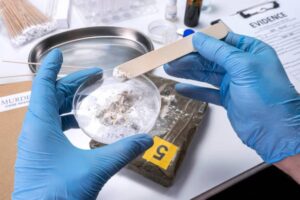If you have any old or existing materials in your home that could contain asbestos, it’s best to have them tested by an expert. This is particularly important if the material is damaged or deteriorating.
Asbestos can cause life-threatening illnesses if inhaled over time. The safest thing to do is contact a licensed and experienced asbestos inspector for a visual inspection. For the best asbestos testing in Adelaide, check this out!
Safety First
 Asbestos is a dangerous material that has been banned in Australia and other Western countries because of the health risks it poses. It consists of fibres that are easily inhaled and can lead to diseases such as lung cancer, asbestosis, mesothelioma, and more. These symptoms often don’t appear until years after exposure, and they can be fatal.
Asbestos is a dangerous material that has been banned in Australia and other Western countries because of the health risks it poses. It consists of fibres that are easily inhaled and can lead to diseases such as lung cancer, asbestosis, mesothelioma, and more. These symptoms often don’t appear until years after exposure, and they can be fatal.
For this reason, it’s essential to know whether your workplace or home contains any asbestos before beginning work on any projects. If you’re not sure, ask the person with management and control for a copy of their asbestos register or have the building tested by an occupational hygienist. Failure to do so can result in penalties, including prohibition notices, improvement notices, license suspension, and expiation notices.
A visual asbestos inspection usually takes under an hour, and results are available immediately. If samples need to be sent off for laboratory testing, this process may take a little longer. In these situations, homeowners must be able to be at home for sample procurement.
Peace of Mind
Asbestos is a hazardous material, especially in deteriorated conditions. That’s why it’s important to have rigorous asbestos testing and identification done before any work is undertaken on your home. Even a minor renovation can disturb the fibres and cause them to be released into the air. Exposure to asbestos can lead to a variety of health problems, including mesothelioma, which is a terrible and potentially fatal disease. For the best asbestos testing Adelaide, check this out!
It is vital to get a professional inspection for any property with suspected asbestos, as the naked eye cannot identify the material. A professional inspector will take a number of samples from all areas where they may be present and send them to a NATA-accredited laboratory for identification. They will also dampen the area before collecting the samples to minimise the risk of releasing dust with potential asbestos fibres into the air. This will protect you from unnecessary exposure and save you money.
Reputation
Older homes built before stricter asbestos measures were adopted are likely to contain some form of the material, especially in ceilings, walls, roofing and tiles. If you are planning to renovate a property, it is essential to have these materials tested for asbestos. This will ensure that the presence of toxic fibres does not compromise your health.
The material can be sampled by a professional using two types of microscopes, including a stereo microscope to identify individual fibres and a Polarising Light Microscope to assess bulk fibres. The results of the test will indicate whether the material contains chrysotile, amosite or crocidolite.
They also conduct air testing, which is required for workplaces that are subject to Occupational Health and Safety Acts and Regulations. For the best asbestos testing Adelaide, check this out!
Cost
The cost of asbestos testing in Adelaide is an essential investment that can save you a significant amount in future medical bills and other potential problems caused by exposure to asbestos. It is also a good idea to test your property for asbestos before purchasing or undertaking renovations.
A Licensed Asbestos Inspector will visit your property and visually review the situation. They will take notes on the condition, size and surface of the suspected material and the accessibility concerns for removal if necessary. Then, they will sample (break off) a piece of the suspect material roughly the size of a 50-cent coin. After sampling, the material will be sealed using PVA glue or putty and transported to a NATA-accredited laboratory under chain of custody for analysis using polarised light microscopy or dispersion staining techniques.